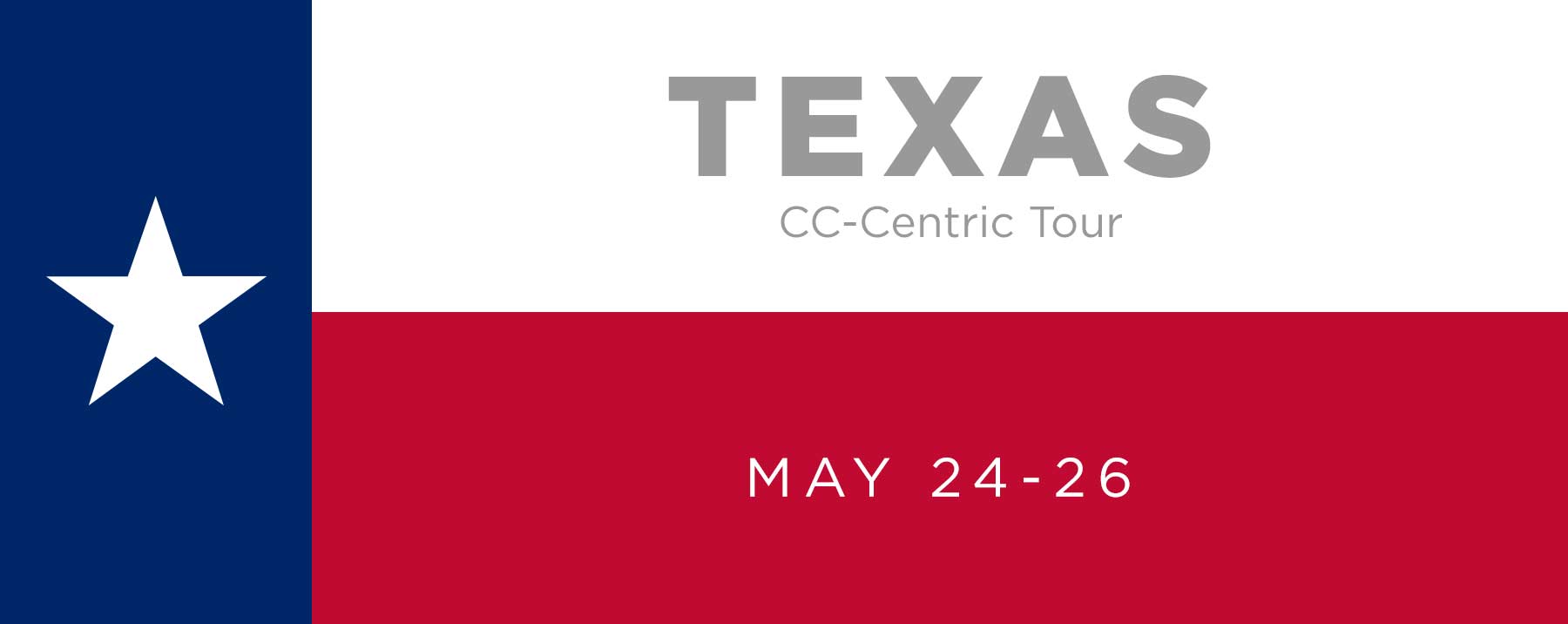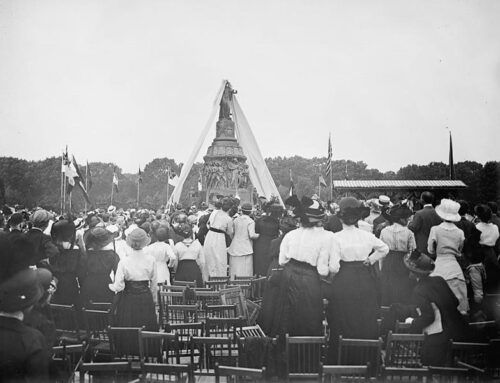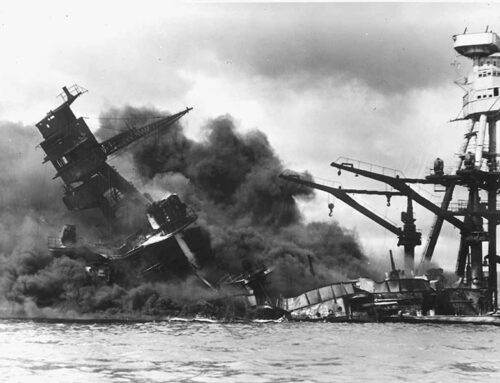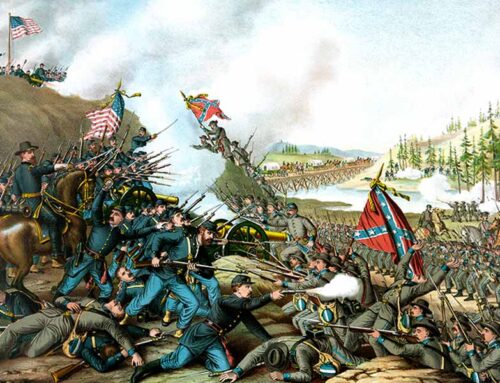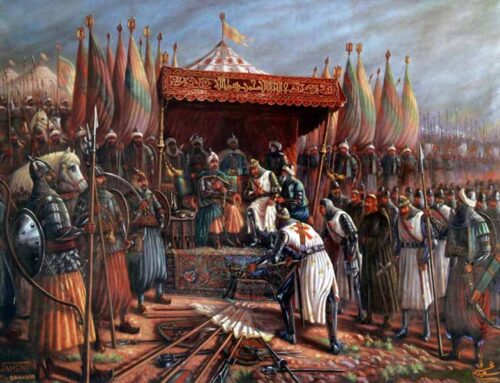“From whence come wars and fightings among you? come they not hence, even of your lusts that war in your members? Ye lust, and have not: ye kill, and desire to have, and cannot obtain: ye fight and war, yet ye have not, because ye ask not. Ye ask, and receive not, because ye ask amiss, that ye may consume it upon your lusts.” —James 4:1-3
Battle of Buena Vista, February 22-23, 1847
![]() ollowing the successful fight for Texan independence from Mexico, certain U.S. congressmen and senators began lobbying for adding the Republic of Texas to the United States. A number of states opposed the annexation of Texas, believing it would come into the Union as a slave state, and they were determined not to allow the creation of another Southern State. Nevertheless, after ten years of bitter debate, the Republic of Texas became the 28th state of the Union on December 29, 1845.
ollowing the successful fight for Texan independence from Mexico, certain U.S. congressmen and senators began lobbying for adding the Republic of Texas to the United States. A number of states opposed the annexation of Texas, believing it would come into the Union as a slave state, and they were determined not to allow the creation of another Southern State. Nevertheless, after ten years of bitter debate, the Republic of Texas became the 28th state of the Union on December 29, 1845.

Sam Houston’s December 12, 1835 recruitment proclamation as Commander-in-Chief of
the new, paid Army of the Republic of Texas
Mexico had never really accepted Texas independence, and rejected that territory becoming a part of the United States. The Mexicans considered the Nueces River the southern boundary of their Texas province; Texas claimed the Rio Grande as the southern boundary. The enemy claimants to the land between those rivers clashed several times before American President James K. Polk ordered troops to retaliate against Mexican forces. The clashes resulted in a declaration of war by both parties and the Mexican/American War exploded along the no-man’s land between the rivers.
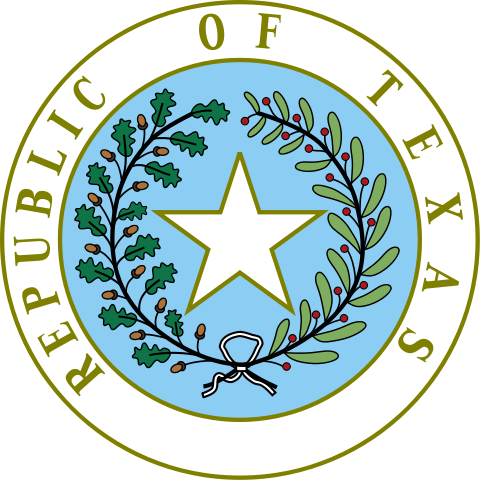
Seal of the Republic of Texas, 1839-1845
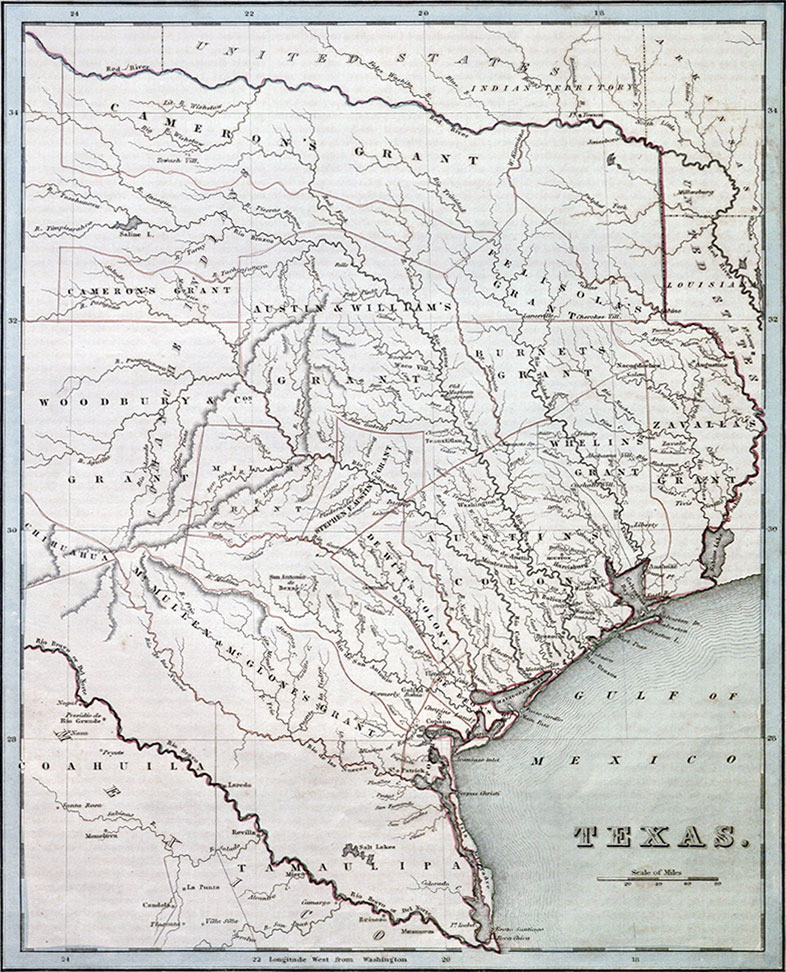
An 1838 map of the Republic of Texas showing the Rio Grande as the southern boundary, as recognized by the Republic of Texas…

…Versus a map of the same time and by the same cartographer showing the Nueces River as the southern boundary, as recognized by Mexico
General Zachary Taylor and about 4,700 American infantry and cavalry were ordered by the President and the overall American commanding General Winfield Scott to remain near Monterrey, close to the Rio Grande border. Taylor instead moved south to a more strategic blocking position. At the same time, the commanding General of the Mexican Army, Antonio Lopez de Santa Ana, led his forces within five miles of Taylor’s command, capturing a hundred American troopers.
The Mexican army outnumbered Taylor about 20,000 to 5,000. The disparity in numbers was offset somewhat by the Mexicans’ lack of weapons for all the soldiers, many of whom were green troops, never having fired a gun anyway. Santa Ana’s force included about 5,000 women. Attrition by the cold weather, sickness, and desertions cost the Mexican General several thousand of his army. Near the Hacienda de San Juan de Buena Vista, Santa Ana struck the drawn up American army.
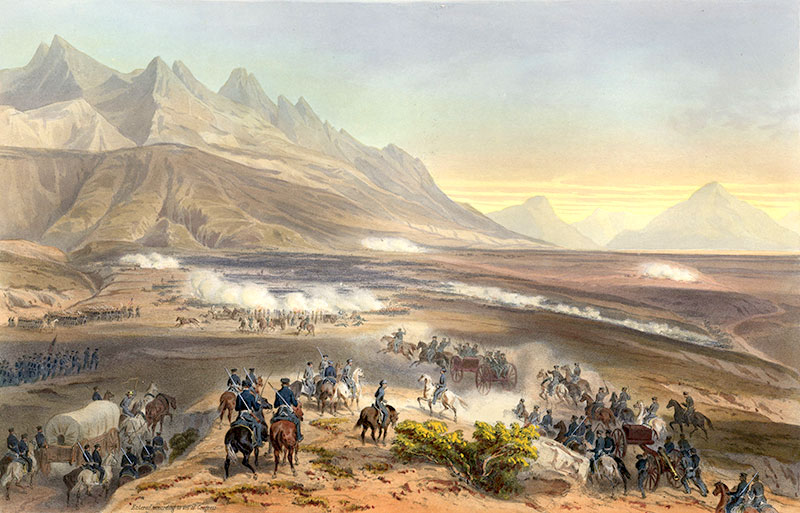
The Battle of Buena Vista took place near the village of Buena Vista in the state of Coahuila, about 7.5 miles south of Saltillo, Mexico
General Taylor’s second in command, General John Wool, made the disposition of regiments from Indiana, Kentucky, Arkansas, and Texas, as well as his artillery batteries. Santa Ana chose to attack on George Washington’s birthday, an auspicious boost to American morale. Some of the enemy soldiers assumed, like the generality of Americans today would also likely believe, that President Washington was in command, though having died some 47 years earlier.
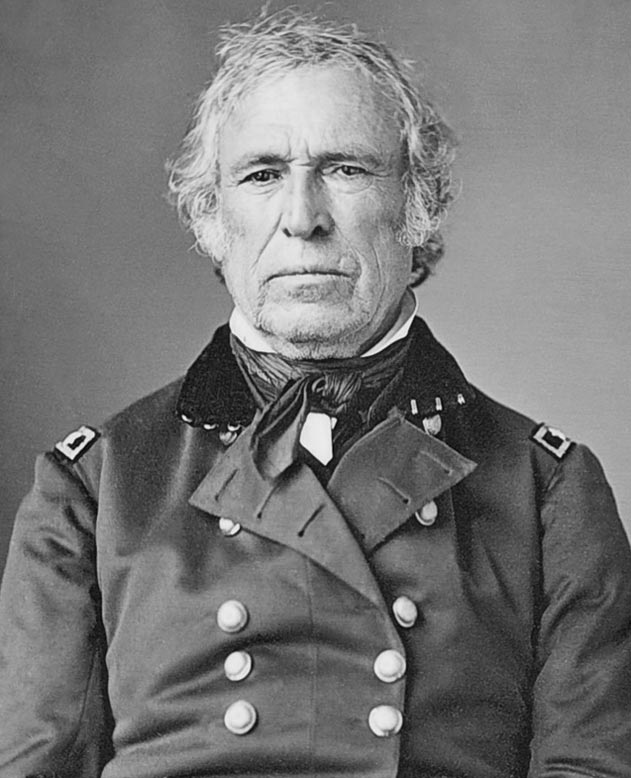
Zachary Taylor (1784-1850), commander of the American troops
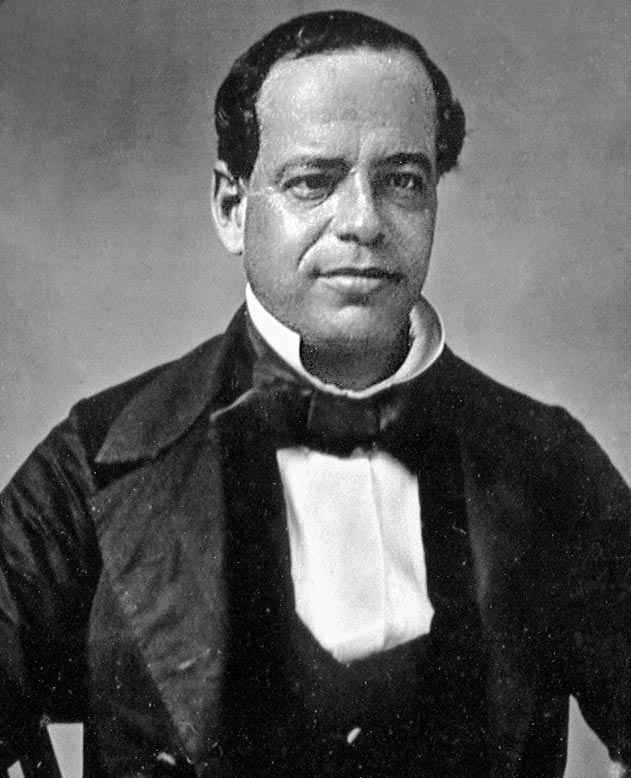
Antonio de Padua María Severino López de Santa Anna y Pérez de Lebrón (1794-1876), usually known as Santa Anna, commander of the Mexican troops
The Mexican commander sent a demand for Taylor to surrender before the battle began, outnumbering the Americans 4-1. Taylor’s reply, given by his aide William Wallace Bliss, curtly rejected Santa Ana with these words: “I beg leave to say that I decline acceding to your request.” At half past three in the afternoon, the Mexican skirmishers struck the left flank of the American battle line, without much loss on either side. Nightfall ended the introductory phase of the battle. The following morning 7,000 Mexican soldados struck the left flank in force, while an attack force feinted toward the right flank to hold those regiments in place, driving the Indiana brigade from the field, and forcing the Illinoians into a fighting withdrawal. With the rout of the American cavalry, Colonel Archibald Yell—former congressman and governor of Arkansas, but inexperienced and inept general—was killed. Yell County and the Yell Rifle were named after him and three of his subordinates and his son all became Confederate generals in the next war.
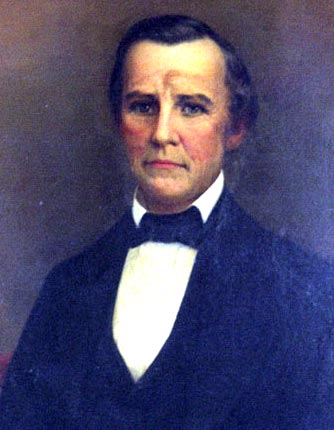
Archibald Yell (1797-1847) was killed in action at the Battle of Buena Vista
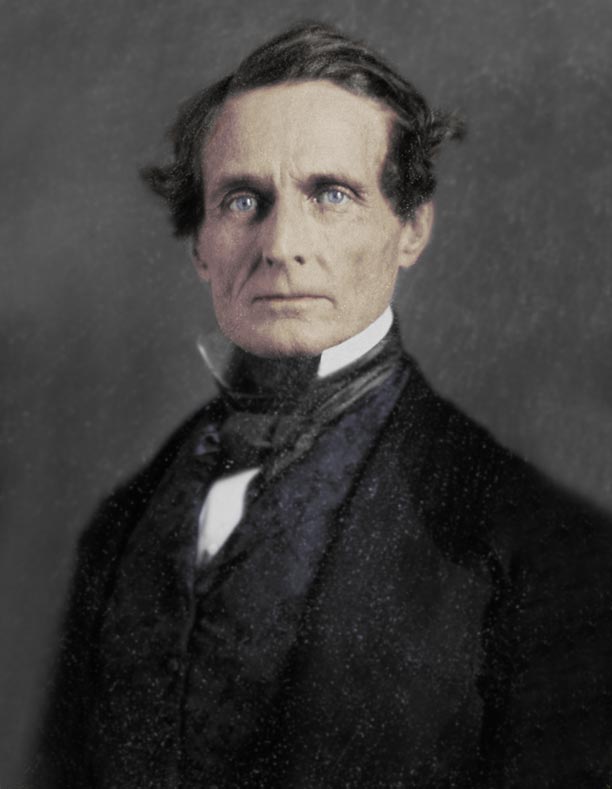
Jefferson Davis (1808-1889)
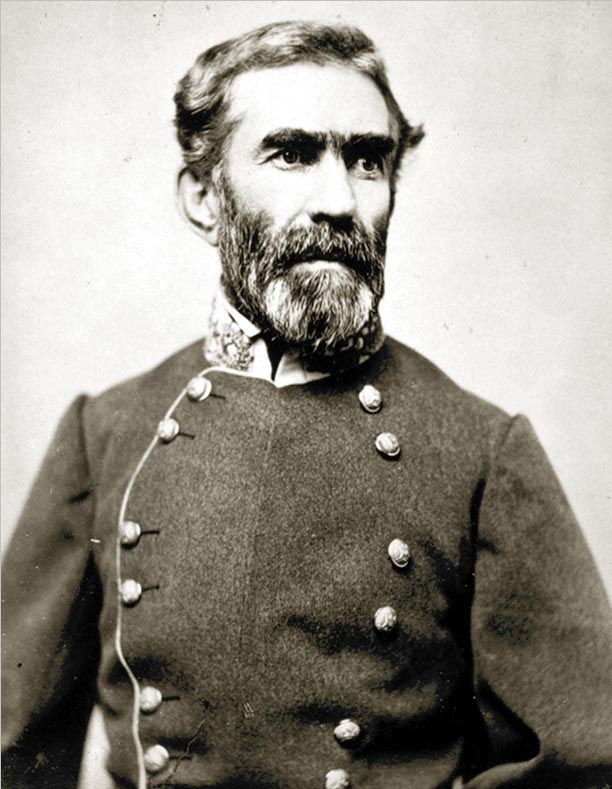
Gen. Braxton Bragg (1817-1876)
Colonel Jefferson Davis and his Mississippi riflemen moved up to defend the hacienda, routing the attackers at that point of the battlefield. Davis was wounded. General Francisco Perez resumed the battle on the American left flank with infantry and artillery. At a crucial point in the battle, Captain Braxton Bragg arrived with his artillery and ordered to double shot his guns with canister to repel the infantry attack. As has been often said, Taylor rode that order to Bragg right into the White House.
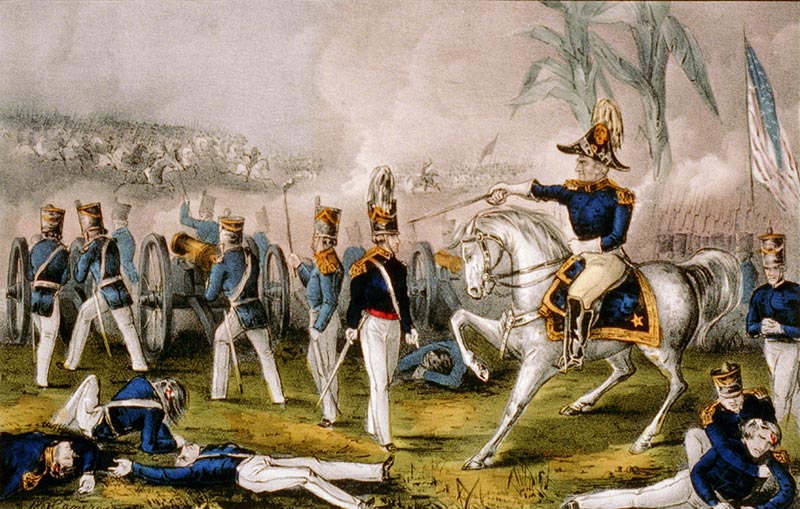
A contemporary illustration depicting Gen. Zachary Taylor ordering Capt. Braxton Bragg to double-load the cannons at the Battle of Buena Vista
With the close of the second day of battle, Santa Ana held a council of war with his generals and decided to break off the engagement, though some of his generals thought that one more day of battle would bring the victory. In any case, both sides claimed victory and had fought bravely and ferociously, and had the casualties to prove it. The Mexican Army, in this first major battle, had captured cannons, flags, and rifles, now on display in Mexican museums, suffered more than 3,000 casualties, and caused the Americans around 600. Zachary Taylor had been left in command of the battlefield and became the first great hero of the War with Mexico. It took about two months for the news to spread and the result was “an outpouring of praise in poetry and prose, music, and art.” There are at least nine U.S. towns in nine states named Buena Vista.
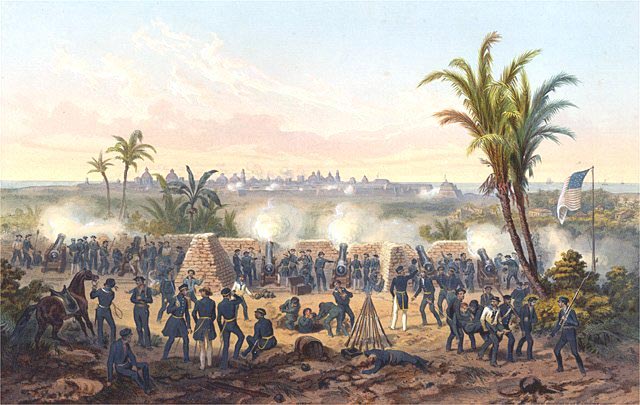
Winfield Scott’s battery is set up overlooking the port city of Vera Cruz, Mexico during the Siege of Vera Cruz, March 9–29, 1847
At the same time of the battle, General Winfield Scott (known as “old fuss and feathers”) successfully landed another American army at Vera Cruz and began the campaign against Mexico City. Vera Cruz was a “walkover” since the main Mexican army was in the north fighting Taylor. Although both Scott and Taylor associated with the Whig Party opposed to President Polk, Taylor was kept on the shelf as much as possible to allow the weaker political prospect, Scott, to prosecute the war and garner further accolades. As Providence ordered things, Taylor was elected President anyway, and the William and Mary graduate Scott remained as the highest-ranking American general since George Washington, and was still in the saddle (metaphorically, since he was 6’5” and grew to over 300 pounds), when the Civil War began. Many of the Generals on both sides of that war fought in Mexico with one of the two Army Commanders. Colonel Jefferson Davis married his commanding officer’s daughter, Sarah Knox Taylor.
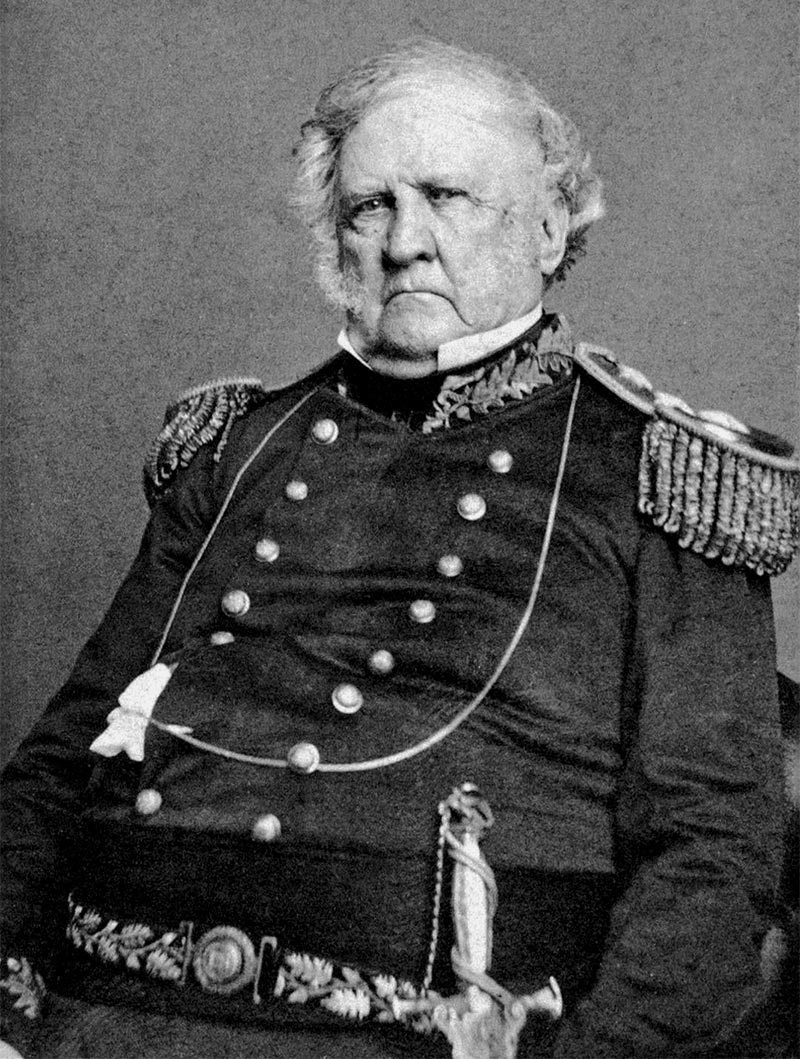
General Winfield Scott (1786-1866) in 1862
Learn Texas History Where it Happened!
Join us on a three-day car tour across the Lone Star State as we offer a gripping overview of some of the state’s defining moments. We will visit the iconic Alamo where Davy Crocket, Jim Bowie, William Travis and other freedom lovers made their gallant stand against Santa Anna and the Mexican Army. You will see the cannon that inspired the patriots of Gonzales in their “Come and Take It!” response to a tyrannical order. We will walk the San Jacinto Battlefield where Texas Independence was won, and much more. All along the way Mr. Potter will be noting God’s providence in the affairs of men. Learn More >
Image Credits: 1 Texas Recruitment (wikipedia.org) 2 Republic of Texas Seal (wikipedia.org) 3 Rio Grande map (wikipedia.org) 4 Nueces River map (wikipedia.org) 5 Battle of Buena Vista (wikipedia.org) 6 Zachary Taylor (wikipedia.org) 7 Santa Anna (wikipedia.org) 8 Archibald Yell (wikipedia.org) 9 Jefferson Davis (wikipedia.org) 10 Braxton Bragg (wikipedia.org) 11 Loading cannon (wikipedia.org) 12 Siege of Vera Cruz (wikipedia.org) 13 Winfield Scott (wikipedia.org)


